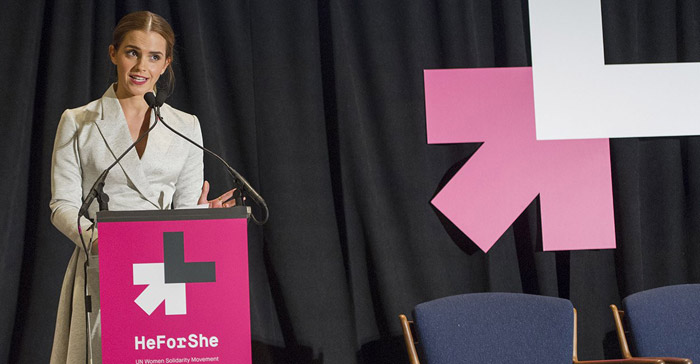What responsibilities, if any, does the feminist movement have with regards to addressing the rights of men? Several incidents and news stories have brought up this question recently, but none have provided a clear answer.
In her recent speech for the United Nations’ (UN) He For She Campaign, Emma Watson implored men to join in the feminist fight for equality. Watson acknowledged the unfair gender norms facing men, such as their less respected role as parents and the social pressure they face to act ‘strong’ and conceal certain emotions. She reached out to all men and boys, stating, “gender equality is your issue, too.” Watson asked men to join the feminist movement so that together, men and women can put an end to the gender-based discrimination that affects everyone.
Cathy Young, a well-known journalist and author, also raised the issue of gender discrimination against men in an article that she wrote for Time magazine. Young, however, criticized Watson’s speech, arguing that the feminist movement should not only include men, but should actively work to fight discrimination against men. She stated that until feminism begins to actively combat the sexist biases against men, the movement for gender equality will be incomplete. Young raised the debate over the recent domestic violence cases of Ray Rice and Hope Solo. Both professional athletes are facing charges of domestic violence—Rice for assaulting his fiancée, and Solo for assaulting her nephew and sister. Young and many others have tried to argue that the public’s stricter reactions to Rice’s violence is unfair, and that it represents a gendered bias towards men. She goes on to state that it is precisely such forms of discrimination against men that make the He for She campaign so “rotten.” There are several problems with such claims.
The two cases of domestic violence that Young compares are fundamentally different. Domestic violence committed against a woman by her male husband or partner is incomparable to any other type of domestic violence because of its historical and cultural underpinnings. According to Statistics Canada, women are more than twice as likely as men to be the victims of spousal abuse. Young brings up the fact that men are much less likely to report incidents domestic violence inflicted upon them because of taboos, but this doesn’t change the fact that domestic violence continues to affect women at much higher rates. This is not to say that Hope Solo’s actions are excusable, or that domestic violence against men isn’t a problem. However, violence against men lacks the same prevalence and broader social meaning, which is why the public’s reactions to the two incidents were so different. While it is true that this is a type of gendered bias, it is in no way a form of discrimination against men. Our standards of justice for female offenders of domestic violence have lagged behind those of men just as equality for women has. In order to achieve the equal treatment of all people, we must do away with the entrenched gender norms that govern our society.
Gendered biases against men certainly exist, and their eradication, as Watson said in her speech, would make the world a safer space for everyone to act independently of gender stereotypes. However, focusing on discrimination against men at the expense of discrimination against women, and equating, as Young did, the ‘discrimination’ experienced by Rice to the widespread sexist biases that affect women is unproductive. Feminists should certainly make the inclusion of men a priority. However, exhorting feminists to combat every sexist bias faced by men does very little to advance the feminist movement. By ending structures of gender that disadvantage women, gender norms will also evolve to hold women to the same standards of justice, thereby eliminating the problem of discrimination against men.








